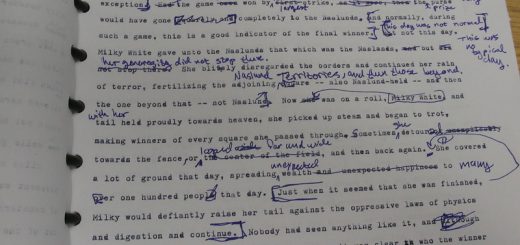Double Royalties or Users’ Rights? The SCC Interprets the Copyright Act in SOCAN

In Society of Composers, Authors and Music Publishers of Canada v Entertainment Software Association, 2022 SCC 30 [SOCAN], the Supreme Court of Canada (“SCC”) heard an appeal from the Federal Court of Appeal (“FCA”). The case turned on the interpretation of s. 2.4(1.1) of the Copyright Act, RSC 1985, c C-42 [the Act].
Despite this statutory interpretation question being central to the appeal, this was arguably overshadowed by another issue: standard of review. In 2019, the SCC rendered its decision in Canada (Minister of Citizenship and Immigration) v Vavilov, 2019 SCC 65 [Vavilov]. Vavilov is significant because it set out a comprehensive approach to standard of review. For the first time—and only three years post-Vavilov—the majority in SOCAN boldly modified this approach by adding a new category of administrative decisions to be reviewed using the correctness standard.
Legislative and Factual Background
Long before SOCAN, Canada signed the WIPO Copyright Treaty, 1996 [WCT], an international agreement aimed at adapting copyright rules to modern technological advancements. Of relevance to SOCAN is Article 8 of the WCT, which provides that authors have the right to control the making available of their works to the public. The making available of works is a uniquely online phenomenon wherein the public has the option to stream and/or download works at their own leisure. Article 8 of the WCT reads:
[…] [A]uthors of literary and artistic works shall enjoy the exclusive right of authorizing any communication to the public of their works, by wire or wireless means, including the making available to the public of their works in such a way that members of the public may access these works from a place and at a time individually chosen by them.
Years later, by way of the Copyright Modernization Act, SC 2012, c 20, Parliament amended the Act. Notably, it added s. 2.4(1.1), which reads:
For the purposes of this Act, communication of a work or other subject-matter to the public by telecommunication includes making it available to the public by telecommunication in a way that allows a member of the public to have access to it from a place and at a time individually chosen by that member of the public.
2.4(1.1) echoes Article 8 of the WCT, as it mentions the making available of works. For the purposes of SOCAN, s. 2.4(1.1) bears most heavily on s. 3(1)(f), which reads:
For the purposes of this Act, copyright, in relation to a work, means the sole right to produce or reproduce the work or any substantial part thereof in any material form whatever, to perform the work or any substantial part thereof in public or, if the work is unpublished, to publish the work or any substantial part thereof, and includes the sole right […] in the case of any literary, dramatic, musical or artistic work, to communicate the work to the public by telecommunication […]
Effectively, s. 2.4(1.1) operationalizes Article 8 of the WCT. It clarifies that communication of works to the public by telecommunication, which authors have the right to under s. 3(1)(f), includes the making available of works.
Issues on Appeal and Procedural Background
In SOCAN, the SCC was asked to interpret s. 2.4(1.1) of the Act (SOCAN, para 2). More specifically, the question was whether or not s. 2.4(1.1) obligates users to pay royalties not only for downloading and/or streaming, but also for making works available to the public (SOCAN, para 2). If yes, this would mark the creation of a brand new royalty right for authors, exclusive to the online context.
The Copyright Board of Canada (the “Board”) answered in the affirmative, finding that s. 2.4(1.1) had the effect of creating a new making works available royalty right for authors in the online context (SOCAN, para 2). The Board leaned heavily on Article 8 of the WCT, holding that such an interpretation of s. 2.4(1.1) was necessary to comply with Canada’s obligations under the WCT (SOCAN, para 15). The FCA disagreed and found the Board’s decision to be unreasonable (SOCAN, para 16). In particular, the FCA criticized the Board’s heavy emphasis on the WCT and posited that it led the Board to overlook Parliament’s genuine intentions in drafting s. 2.4(1.1) (SOCAN, para 17). The FCA, seemingly in obiter, also planted a seed which would prove critical at the SCC—it stated that although it had received no submissions on the issue, there was good reason to review the Board’s decision on a correctness standard (SOCAN, para 16).
At the SCC, standard of review was explicitly raised and addressed as the first issue (SOCAN, para 21). While before the Board, SOCAN was an intellectual property case, it had transformed into a precedent-setting administrative law case by the time it reached the SCC.
The Statutory Interpretation Question
Leaving aside the issue of standard of review, the entire court was in agreement that contrary to the Board’s decision, s. 2.4(1.1) cannot be interpreted to create a double royalty (SOCAN, paras 5, 148). Justice Rowe, writing for the majority, instead held that only one royalty is payable where a work is made available and subsequently downloaded and/or streamed (SOCAN, paras 59 & 100). The majority held that this was the only interpretation which properly took into account the Act’s text and structure, its purpose, and its context (SOCAN, para 52). Justice Karakatsanis, concurring on the interpretive issue, agreed with Justice Rowe for largely the same reasons (SOCAN, paras 152, 158).
Text and Structure of the Act
The majority held that the Board’s interpretation was inconsistent with the text and structure of the Act (SOCAN, paras 59–60). For context, the three existing copyright interests which give rise to royalty rights are performance, authorization, and reproduction (Copyright Act, s. 3(1); SOCAN, paras 57, 101). S. 2.4(1.1), being situated in the “Interpretation” section of the Act, merely clarifies that making works available is an act that engages an author’s performance rights (SOCAN, paras 57, 59). It does not, as suggested by the Board, create a new compensable activity under copyright law (SOCAN, paras, 57, 59). However, the majority noted that it is well-established in the jurisprudence that only one royalty is payable per activity, so it is irrelevant whether or not a work made available is subsequently downloaded and/or streamed (SOCAN, para 58). One royalty is payable in either case. Justice Rowe noted (SOCAN, para 59):
While I accept that the act of “making a work available” is a separate physical activity from the act of a user downloading or streaming a work, it does not follow that it is a separately compensable activity. Had Parliament intended to treat the act of making available as a new separately compensable activity, the way to do so would have been to add “making available” as a fourth copyright interest.
Technological Neutrality and Users’ Rights
Perhaps the most emphasized factor in favour of the majority’s interpretation was the purpose of the Act. As put by Justice Rowe, “its overarching purpose is to balance authors’ and users’ rights by securing just rewards for authors while facilitating public access to works. When this balance is achieved, society is enriched” (SOCAN, para 5). He went on to note that this is achieved, in part, through the principle of technological neutrality, which quite simply refers to the non-discrimination between different forms of technology (SOCAN, para 6). This principle presumptively applies with respect to the Act unless Parliament expressly derogates it (SOCAN, paras 63, 67). Accordingly, since there was no evidence of an intent to derogate in SOCAN, this militates against an interpretation that allows double royalties in the online context only (SOCAN, para 73). This would create a distinction wherein users would be subject to extra fees for the same activity when in the online domain, thereby discriminating between two technologies to the unique detriment of users.
Article 8 of the WCT
Justice Rowe then went on to address the Board’s assertion that its chosen interpretation was necessary to comply with Canada’s international obligations. He found that while, yes, treaty obligations are relevant to statutory interpretation and there is a presumption that domestic legislation conforms to international obligations, this presumption did not necessitate the Board’s finding in SOCAN (SOCAN, paras 46-47, 49, 51). Article 8 of the WCT merely requires authors to have control over the making available of their works (WCT, Article 8). It does not specify the manner in which this is to be accomplished, and as noted by the majority, there is another option besides double royalties (SOCAN, paras 51, 87; WCT, Article 8). The majority’s interpretation, which allows royalties for making works available but not duplicated royalties for works subsequently streamed and/or downloaded, ensures that making works available is a protected activity as necessitated by Article 8 (SOCAN, para 108).
Analysis: The Court’s Approach as Defensible
It is well-settled that the modern rule of statutory interpretation is the gold standard. As noted in Rizzo & Rizzo Shoes Ltd (Re), [1998] 1 SCR 27, it requires courts to go beyond the grammatical and ordinary meaning of a text and additionally consider its context, the scheme and purpose of the legislation, and the intention of Parliament (para 21). Although the SCC evidently employed this approach in its consideration of the text, purpose, and context of the Act, it did not explicitly lay out its approach. Perhaps for clarity’s sake, it would be beneficial for the court to reiterate the modern rule in each case before applying it.
Otherwise, it is difficult to criticize either the SCC’s reasoning or conclusion on the statutory interpretation issue. The issue with the Board’s interpretation in SOCAN was that although it considered the international context of the Act, it essentially ignored Parliamentary intent and the underlying purpose of the Act—technological neutrality and the balancing of authors’ and users’ rights. Since an additional interpretation was available that considered these factors without undermining international obligations, it was sound for the court to favour that approach. Had there been no other interpretation through which to comply with obligations under the WCT, perhaps the outcome would have been different. But given the facts of SOCAN, it is difficult to disagree with the SCC’s finding. It is unsurprising that there was no dissent on the statutory interpretation question.
The next installment of this post addresses the far more contentious issue of standard of review.








Join the conversation